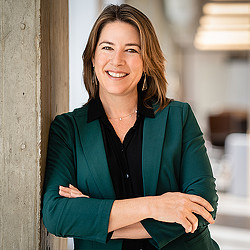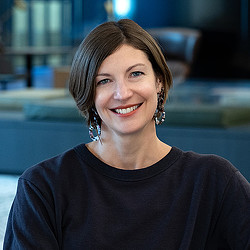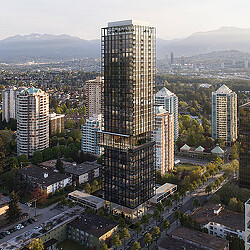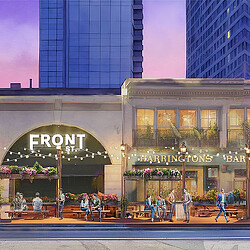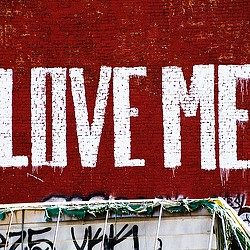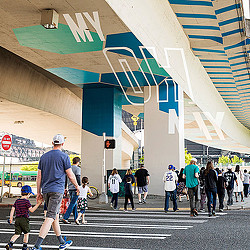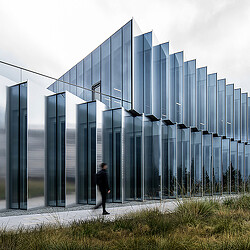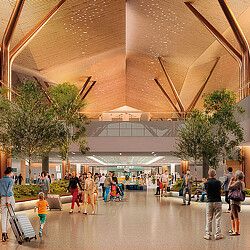Trends to Watch: How Global Events Build Magnetic Place Brands
From the Super Bowl to the FIFA World Cup, marquee events transform urban environments into platforms that amplify civic pride and create lasting impact.
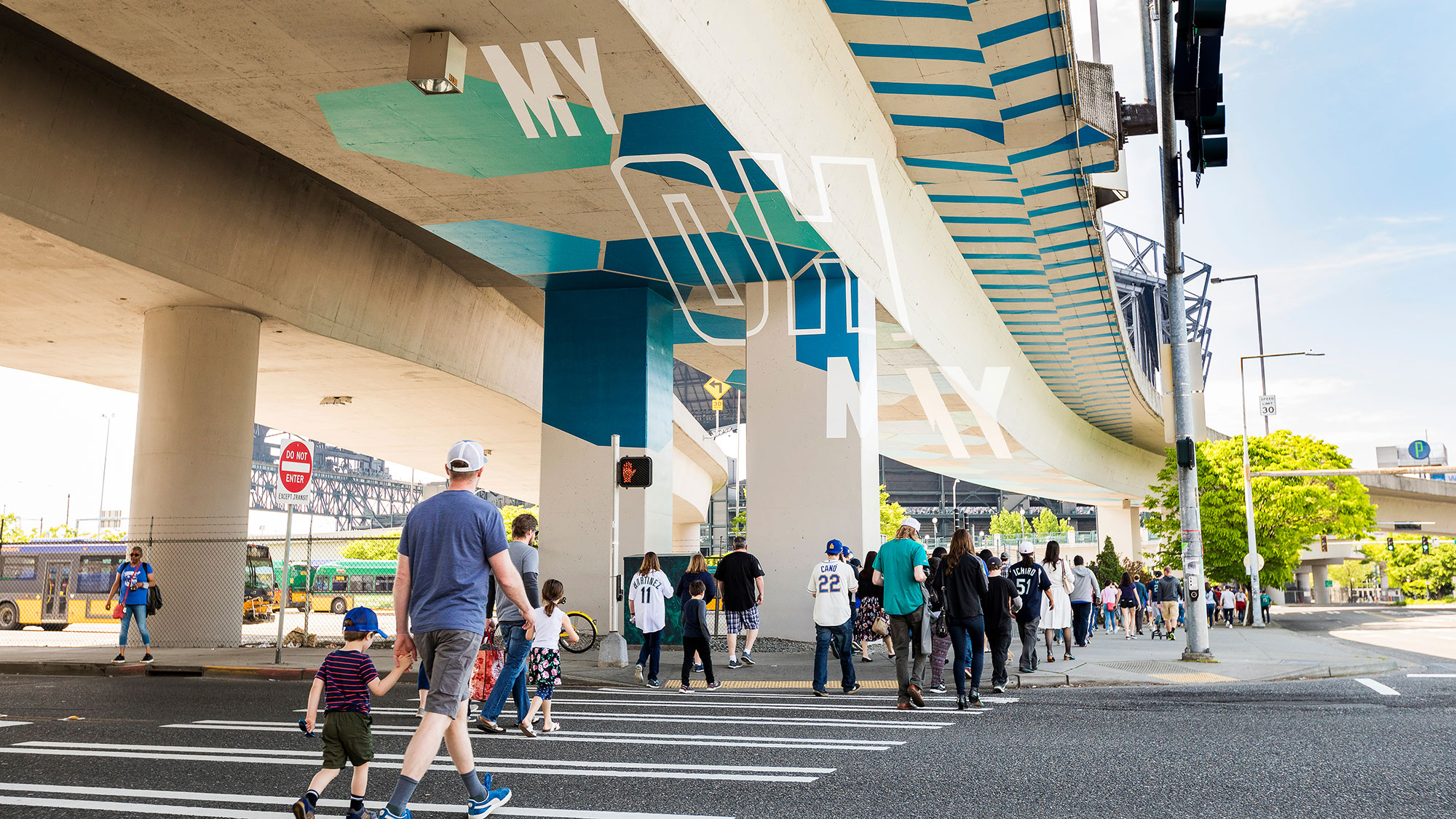
From the Super Bowl to the Summer Olympics, today’s marquee events aren’t just sports and entertainment — they’re launchpads for immersive brand storytelling, with entire cities acting as co-authors. These events transform urban environments into platforms for memorable experiences that amplify civic pride and create lasting impact far beyond the event.
In a recent webinar, Amy Bixler and Janice Cavaliere, global leaders of Gensler’s Brand Design practice, joined panelists Patty Hubbard, Chief Marketing Officer, Bay Area Host Committee; David Holder, Principal, Clarity of Place; Jason Carnew, Vice President of Growth, Xpedition; and Cindy Maki, Signage & Wayfinding Manager, Port of Seattle, to discuss “City as Stage: Global Events as Brand Builders.”
Here are some of the key takeaways from this discussion:
Align stakeholders early to create a unified brand narrative.
Patty Hubbard: In the San Francisco Bay Area, we have numerous stakeholders, from state leaders to city mayors to destination marketing organizations (DMOs), that come together to ensure the region’s brand narrative is solid. As a host committee, we’re preparing for the FIFA World Cup 26 and the Super Bowl and working with city mayors to unite everyone — from hotel check-in to airport ambassadors — so that visitors feel safe and welcome. We’re also leveraging the FIFA and NFL brands to help amplify those stories.
Cindy Maki: At the Port of Seattle, if you were to take our population here, we’re like the third or fourth largest city in Washington. And Seattle-Tacoma International Airport (SEA) has over 53 million passengers every year. There are so many different businesses and partners that we collaborate with. As a host city for the FIFA World Cup 26, we’re connecting with our transit partners, whether it’s in the terminal or our ground transportation spaces, using all this motion and energy to enhance the experience for everyone traveling through our space.
Magnetism comes from authenticity, not perfection.
Jason Carnew: For a city to be magnetic, it has to play at a global level. As Patty said, that means incredible venues, unforgettable moments, communication between stakeholders, and smooth logistics. But it isn’t about perfection; it’s about personality. Large events can erase the personality of a place. The best brand experiences don’t try to outshine the city. They pick up on its humor and its quirks, and they amplify that, whether at big events or in-between moments.
David Holder: These events are an opportunity to engage and build community pride. At the same time, they must distribute visitors across the community and the region, and the welcome has to resonate with people from around the world. This is their chance to be introduced not just to the host city, but also to the surrounding locations.
Most experiences happen outside the stadium — design for the in-between.
Jason Carnew: The average person spends only about 2% of their time at the actual event, and the rest is spent at the airport, Airbnb, or restaurant. I believe that those in-between spaces are actually the experience for most people. These places are a blank canvas for storytelling where a brand can partner to create a sense of welcome or play.
Patty Hubbard: When you think about the NWSL fan, the Super Bowl fan, or the World Cup fan, they’re all very different. While a Super Bowl fan might be here for three days, a World Cup fan could be in any of our markets for multiple weeks. Not everyone can go to a Super Bowl game or afford a World Cup ticket, so we’re creating watch parties and fan zones in all nine counties, so everyone can participate. That has been a big part of our strategy to ensure that small businesses also benefit.
Accessible transit and seamless wayfinding are critical to success.
Cindy Maki: Accessibility is key to elevating the experience. In Seattle, we’re testing what our transit partners communicate through wayfinding, iconography, and language, so it’s the same icon when you’re traveling on light rail or the ferry. The final piece is understanding the data that reveals where those pain points might be and obsessing over them from a customer service standpoint to improve the experience.
Patty Hubbard: From a transit perspective, I love what Cindy said about how all those pieces are part of the ecosystem. We have 29 transit agencies, three airports, and multiple counties here in the Bay Area, so communication is a challenge. The airport is such an important part of the equation in making the experience seamless, so it shouldn’t feel like a work in progress when travelers arrive.
The Halo Effect: Mega-events can drive long-term economic and social benefits.
David Holder: These large-scale, mega events require big investments. If we’re building new infrastructure to host this event, how will we maintain it over time? The halo effect becomes something magnetic; people talk about the host cities for years to come. It allows visitors, future residents, and local employees to see themselves there. It offsets the costs with a return on investment over time.
It’s really important for cities to curate their event calendars strategically. We’ve all heard about the Taylor Swift effect, but it extends to other concerts, performances, and even conventions. It’s not just about hosting but attaching our brand to an event to create business opportunities and community benefits for years to come.
Patty Hubbard: We’ve partnered with some amazing organizations to use these big events to certify and employ hospitality and security workers, then transition them to jobs with local sports teams. We’re building nine sports hubs where multi-year programming, such as upskilling and coaching, is embedded, so we’re partnering with organizations like the Aspen Institute, Tipping Point, and America Scores, which already do this great work. It’s an example of the halo effect extending beyond the Bay Area and having a greater social impact.
Cindy Maki: The event really is the catalyst for the experience. We’re seeing a ripple effect where communities, business partners, leaders, and volunteers come together to create a great experience for those entering our space. We’re making employees feel involved and invested. These events are just moments, but the energy and partnerships really can go far beyond that.
For media inquiries, email .
